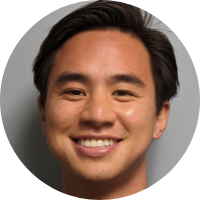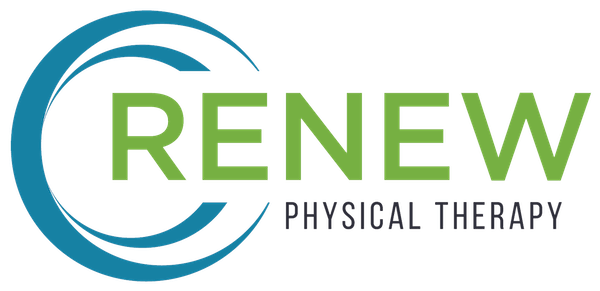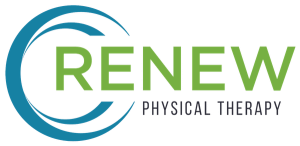
For physical therapy graduates, transitioning from school to the workplace can be a daunting task. After several years of classroom learning and clinical rotations, making the adjustment to a new work environment, new patient population, and new colleagues can take some time.
As graduation takes place, many new physical therapists in the Seattle area will be entering the workforce, and Renew Physical Therapy wants to share some tips on navigating this transition.
We spoke with Brent Wong, PT, DPT, COMT, who graduated from Northwestern University and began working at Renew Physical Therapy in 2021, to hear his advice for physical therapists starting their transition to the workplace.
Q: Starting any new job can be overwhelming, what are a few things new PTs can do to set themselves up for success?
A: Embrace your independence. Up until this point, all patient care has included somewhat of an “audience,” whether that is your clinical instructor or mentor. Now, without that added layer, your patient interactions are all in your hands. Trust your teachings, guidance thus far, and knowledge that you have accumulated. Lean on your individual treatment strengths to provide a fruitful visit.
For myself, I have found that I really enjoy the patient education aspect of an initial evaluation, making sure my patient understands the mechanical nature of what caused their symptoms, and how to move forward with treatment. It has been helpful for me to think of my appointments as an embodiment of my accumulated physical therapy and personal skills.
Soak in your surroundings. As you are establishing your brand of physical therapy, be sure to take advantage of your clinic’s resources. Ideally there are at least one or two therapists that you can utilize to help boost your own practice – whether it be through formal mentorship, discussing cases, or observation. I’ve found collaboration to be especially helpful to reduce burnout with the transition into full time working.
Give yourself time. Be gracious to yourself as you make this transition and understand that it takes experience and time to grow. It is natural to desire being capable of handling all situations and cases presented to you. There will likely be circumstances that test you beyond what you feel is within your clinician toolbox. Learn from these moments and ask mentors/colleagues questions about how to optimize in order to evolve. In this process, I have found achieving peace easier by reminding myself of the relative scale of challenges; small moments to shape my unfolding career.
Q: What advice do you have to help someone adapt to new processes and systems in a clinic (documentation, scheduling, managing the non-clinical tasks of a clinic)?
A: Depending on your expectation, the vast amount of the non-clinical aspects to this outpatient ortho field may come as a surprise. Clear communication through documentation is immensely valuable because of the nature of insurance authorization, running the clinic’s logistics smoothly, and keeping all involved providers informed. Just as with clinical skills, it helps to understand that these tasks will be mastered over time with trial and error. Keep aiming for efficiency to reduce your time documenting/scheduling in order to allow you to center your mental energy on clinical patient care, and to prevent exhaustion in general. In my time at Renew Physical Therapy, it has been great seeing each therapist’s different stylized approach to this – we are all working towards the same goal of charting smarter.
Q: Which skills that you had as a student have best translated or assisted in the transition to working full-time?
A: In school, I recognized that the most effective way I learned was through visualization – whether through the cadaver lab, 3D anatomy maps, or even drawing structures on paper. This has led to me prioritizing visualization in my patient education. It helps both myself and my patient to be able to see the structure of their affected body part on a model, video, or anatomy map, and its relationship to the surrounding structures.
In general, I have seen that my enjoyment of connecting with people and learning their stories has translated easily into the clinic as well. We are surrounded by people as physical therapists – patients, other physical therapists, admin staff, aides. It has only helped to have great relationships with everyone at Renew.
Q: How does ongoing education fit into the workplace?
A: I think it is very important to constantly welcome learning, especially at the beginning of the career. A mentor once told me that your first few years as a physical therapist set the general foundation for the rest of your career. This involves your clinical habits, treatment vocabulary, and tendencies of decision making. With that in mind, I sought to earn my COMT in my first year as a physical therapist, in an effort to strengthen my emerging foundation. This, along with frequent collaboration with other therapists, really helped bolster my confidence and effectiveness in treatments. When looking for jobs, it is important to ask about clinic policy towards continuing education and mentorship, as it will be key in your first steps.
Q: Having a good rapport with your colleagues is so important for overall job satisfaction – what can new physical therapists do to ensure they build this camaraderie in their new clinic?
A: Bring food! Kyle is hosting a whole pig roast this summer which is the most powerful act of camaraderie I have heard of in my working career. Be a reliable source of something useful; I used to carry pump lotion in my backpack for anyone’s quick re-moisturizing. Be yourself, enjoy your co-workers (who you spend a majority of every week with). You’ll do great.


